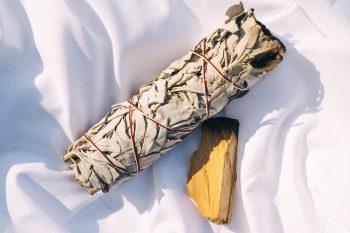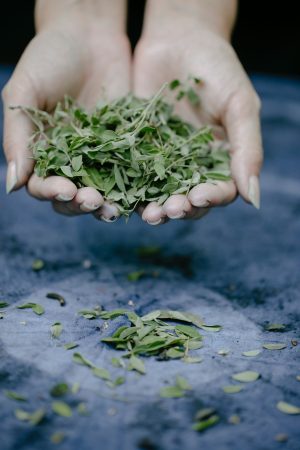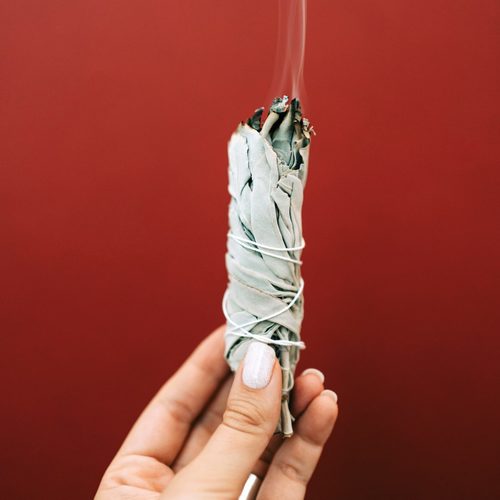In the realm of ancient spiritual practices and traditions, few rituals possess the captivating allure of saging.
With its origins deeply rooted in diverse cultures across the globe, saging has transcended time to become a coveted self-care ritual and practice across multiple faiths and beliefs.
Let’s unravel the secrets behind saging, exploring its purpose, its tools, and a step-by-step guide on crafting your own sage stick!
The story behind saging (or smudging)
Saging, often referred to as smudging, is a ceremonial practice of purifying and cleansing the energy of a person, space, or object.

Pexels
It’s believed that the sacred smoke generated by burning dried herbs, typically sage, dispels negative energy and invites positive vibes into one’s life. The practice holds different meanings across various cultures, but its common thread lies in the transformative power it carries.
ALSO SEE: 5 ways to keep grounded
Why do we sage?
Saging serves multiple purposes, from spiritual to practical. Traditionally, sage is thought to clear stagnant and negative energy from a person, space, or object, encouraging emotional well-being, harmony, and balance. By purging these negative energies, you’re creating a positive and uplifting space.
Sage is often used as a tool for spiritual cleansing, allowing individuals to center themselves, enhance their focus and align with their higher selves. It’s seen as a means to restore spiritual equilibrium and find inner peace.
Saging also plays a crucial role in many rituals and ceremonies, such as blessings, house warmings, and transitions in ancient cultures, symbolising purification.
You don’t have to engage in spiritual practice to sage, though…
Sage is a common plant used in aromatherapy practices and makes a great addition to self-care rituals. Whether it’s a yoga or meditation session or just a relaxing bath – burning your smudge stick can help set the mood for renewal and regeneration. Just set the intention and sage!
ALSO SEE: How to make your own de-stressing aromatherapy blend
Sage as a sacred herb
Sage is the primary herb used in saging rituals.
Its potent aroma and purifying properties make it a popular choice across cultures. Various sage varieties can be used for saging, including white sage, desert sage, blue sage, and more. Each variety carries a unique aroma, lending itself to different intentions and preferences.

Pexels
Crafting your own sage stick
Creating your own sage stick allows you to bind your intentions to a physical process, which enhances your connection to the ritual you’re performing, whether it’s spiritual, or just self-care.
Here’s a simple tutorial on crafting your very own sage stick:
Materials:
- Bundle of dried sage leaves (choose your preferred variety).
- Natural cotton or hemp twine.
- Scissors.
- Optional: additional herbs or flowers for customisation (e.g., lavender, rosemary)
Step 1: For prep, father your materials in a clean, serene space. Take a moment to set your intention and create a sacred atmosphere for your crafting process.
Step 2: Take a handful of dried sage leaves and arrange them into a tight bundle. Ensure that the stems are aligned neatly.
Step 3: Using the natural cotton or hemp twine, tie a knot tightly around the stems of the sage bundle, securing it in place.
Step 4: Begin wrapping the twine around the base of the bundle, spiralling upwards towards the tip. Maintain a firm hold, ensuring the sage leaves are secure. Once you reach the top, tie another knot to secure the twine.
Step 5: If desired, you can add additional herbs or flowers to your sage stick. Simply tuck them into the twine.
ALSO SEE:
Feature Image: Getty

